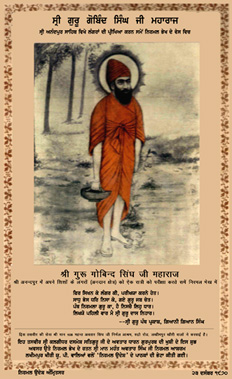Nirmal Bhekh
Nirmalas had a specific job to perform. The propriety set by Sahib Sri Guru Nanak Dev ji and suitable decency and civility added by Sahib Sri Guru Gobind Singh ji led to the establishment of different Deras by the Nirmalas, in different parts of Punjab as well as outside the state. This happened when the chief of one Dera asked a particular Chela who according to him had accomplished scholarly level and attained spiritual level, and could now make a new beginning on his own. This Chela then moved out of the Dera and established with his own Bhakti a new Dera at a different place.
Two types of Sadhus of the Nirmala Bhekh (SECT) took shape. One who remained in the Dera and the other who visited different places to preach.
Many Deras engrossed themselves in teaching Gurumukhi, explaining the history of the Sikhs, spreading the teachings of the ten Gurus; discussing Brahma Vichar and reminded the devotees about the wisdom as observed in Guru Granth Sahib. Some of the Deras took up the challenge of encouraging their devotees to get baptized and accept the sole authority established by the ten Gurus.
Whatever the objectives of a Nirmala Dera, the root doctrines and canons were followed by each one of them. A few of these are listed below:

